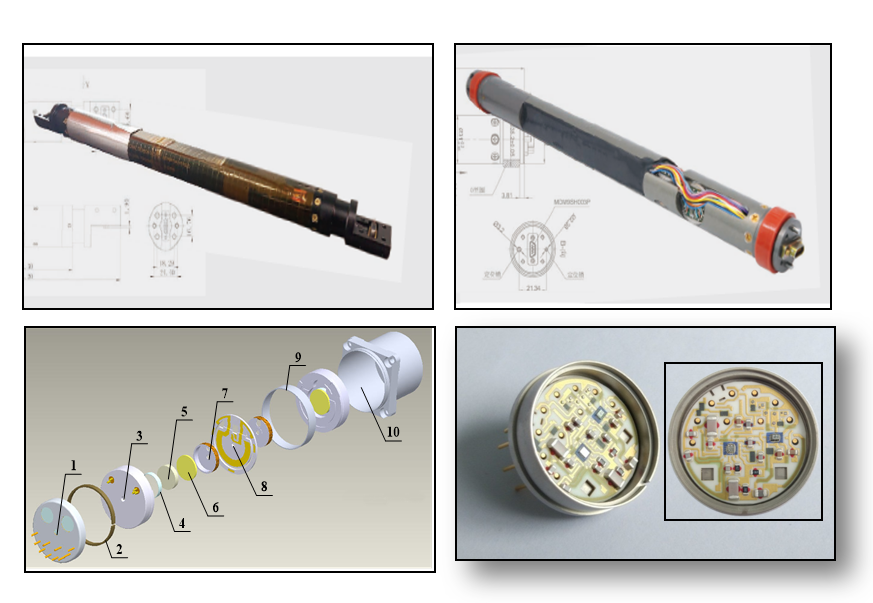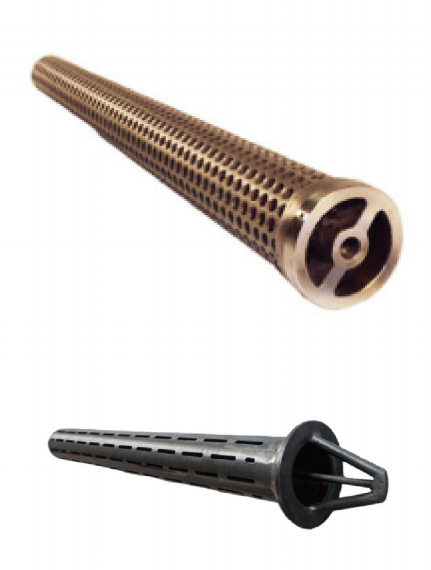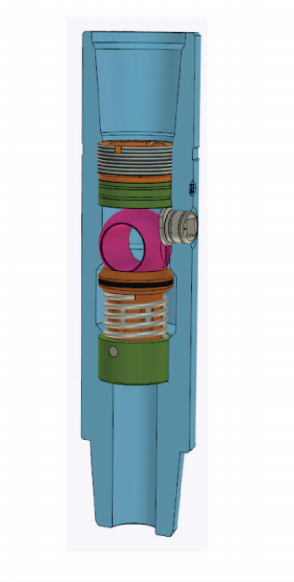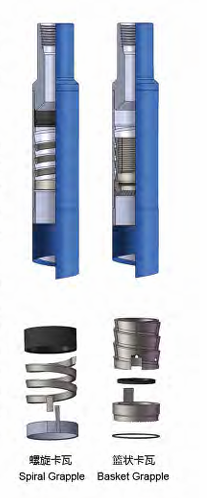Directional probe sensors play an extremely core and critical role in oil drilling, particularly in directional drilling and horizontal drilling operations. They are the fundamental measurement tools for achieving precise wellbore trajectory control, reaching geological targets, improving recovery rates, and ensuring drilling safety.
Their core functions can be summarized into the following key aspects:
1. Precisely Measuring the Wellbore Trajectory:
Core Parameter Measurement: The core function of the directional probe is to measure the position and orientation of the wellbore in three-dimensional space in real-time during drilling. It primarily measures:
Inclination Angle: The angle between the wellbore axis and the vertical direction (0° is vertical, 90° is horizontal).
Azimuth Angle: The direction of the wellbore axis's projection on the horizontal plane (usually 0° at true north, rotating clockwise).
Toolface Angle: The orientation of the bend in the downhole steering tool (e.g., bent sub, rotary steerable system) relative to the high side of the hole or magnetic north. This is a critical input for controlling the drill bit's direction.
Building the Wellbore Trajectory: By continuously or periodically measuring these parameters and combining them with measured depth information, the current spatial coordinates (North coordinate, East coordinate, True Vertical Depth) of the wellbore can be precisely calculated, and a 3D trajectory map of the entire wellbore can be plotted.
2. Enabling Real-Time Steering and Control:
Basis for Control: The measured inclination, azimuth, and toolface angles are the direct basis for decision-making and control by directional drilling engineers.
Trajectory Adjustment: Engineers compare these real-time measurements with the designed wellbore trajectory (target zone, objective points, constraints).
Command Issuance: If the actual trajectory deviates from the plan, engineers calculate the required toolface adjustment and guide the drill bit in the correct direction by changing the bottom hole assembly (BHA) or sending commands to the rotary steerable system.
Precise Target Entry: Ensures the drill bit accurately penetrates the predetermined geological target (e.g., the optimal location within a reservoir).
3. Anti-Collision Scanning and Safety Assurance:
Adjacent Well Risk: In densely developed oil fields (especially offshore platforms or land-based cluster pads), the trajectory of a new well may come dangerously close to existing offset wells, posing a collision risk.
Precise Avoidance: The precise wellbore position data provided by the directional probe is the basis for performing anti-collision scan calculations. By calculating the minimum distance between the new well and offset wells, engineers can monitor the risk in real-time and adjust the trajectory if necessary, ensuring safe drilling and preventing catastrophic collision incidents.
4. Key Input for Geosteering:
Spatial Positioning Foundation: In geosteering drilling, the goal is not only to follow the planned trajectory but, more importantly, to keep the wellbore within the optimal geological target zone (e.g., the high oil-saturation zone of a reservoir) based on real-time geological information (such as gamma ray, resistivity, porosity, etc., usually measured by Logging While Drilling / LWD tools).
Combining Geological Information: The precise spatial position information provided by the directional probe is fundamental for mapping the LWD-measured geological parameters into 3D space. Without accurate wellbore position, geological parameters lose their spatial reference and cannot effectively guide directional adjustments to stay in the "sweet spot."
5. Providing Basis for Subsequent Operations:
Accurate wellbore trajectory data is crucial information for subsequent operations such as completion, casing running, cementing, perforating, production logging, and reservoir management. It ensures these operation tools can be smoothly run to the planned location and executed effectively.
Without it, modern complex directional wells, horizontal wells, and extended-reach wells would be virtually impossible. Its measurement accuracy and reliability directly determine the success, efficiency, and safety of drilling operations.










